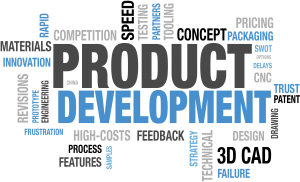 Early this year I read a piece from PayScale reporting Stats on Millennials’ opinion regarding job tenure. The results proved intriguing, surprising and alarming at the same time.
Early this year I read a piece from PayScale reporting Stats on Millennials’ opinion regarding job tenure. The results proved intriguing, surprising and alarming at the same time.
It seems >25% of Millennials believe workers should change jobs within a year and only 13% in the same group thought employees should stay more than 5 years.
Maybe the layoff purges and job insecurities from the last 7 years have changed perspectives? It’s a sad fact that 20% of American workers were laid off at some point in the last 5 years. Isn’t erosion of loyalty and trust inevitable in such a situation? Perhaps the flood of part-time-only jobs has biased these beliefs?
Whatever the cause these are troubling biases with which to approach a career.
Yes, it IS possible to change jobs too often. Similarly, staying in the same role for too long can be a real and perceived stagnation problem. But generalities are NOT useful foundations upon which to build a future.
When you have a choice, NEVER leave a job unless it’s ceased to meet your needs. And, always move TO a new role, rather than AWAY from the old.
Your needs are unique and will encompass some, all even all of the following (un-prioritized):
Personal Growth
Promotional Opportunity
Learning
Career Direction
Compensation
Flexibility
Company Outlook
Culture
Social Fit
Hours/ Vacation
Independence
Physical Location
Travel Opportunity
Reputation
Stability
Commute
Housing Market
Schools
And, much more
When you LIST, PRIORITIZE and WEIGHT your own relevant factors you’ll have the unique perspective of what you need from your job. Review these with both short and long-term outlooks.
If your current position is not ideal, you should consider looking around. Perhaps a search will open your eyes to a new set of possibilities? Often your needs from one job are surprisingly different from those of another. Certainly, every position and company offers different Pros and Cons.
Also, our perspective itself changes, grows and evolves over time.
If your needs ARE being met currently, why would you move? Often it is important to NOT succumb to the grass is greener (elsewhere) perspective. Similarly, an innate fear of change is no good argument for job longevity.
It is easy to convince yourself things are better (or worse) at one place than in another. This is an inevitable result of the wanton rationalization from which we all can suffer. So, it’s generally better to review your alternatives and needs with a trusted colleague, friend or mentor. Detached and sound perspective is essential.
There is no universally applicable rule about when to voluntarily change jobs. In fact the notion of this is almost absurd.
A job-hopping individual can be a godsend in some roles as might be a stick-to-it career veteran in another. Certainly your track record in this regard is an important part of what you bring to the table. Your value to any future employer is directly affected by this history.
There is much to be weighed objectively when making career changes. So, don’t blindly follow canned beliefs or opinion; rather, carefully consider your unique personal needs and objectives.
Ian R. Mackintosh is the author of Empower Your Inner Manager Twitter @ianrmackintosh









